Time and Travels
Vacation travel and sending postcards. For many, these two activities are inseparable.Travelers love to pick-up souvenirs of a memorable experience perhaps as keepsakes or to share with others. A picture postcard usually captures an evocative image and offers the convenience of an inexpensive way to send a brief message in an easily mailed format. The impulse to capture and share the essence of a place continues today. Modern portable technologies allow almost anyone to snap a photo and send the picture with a short message. This same desire propelled picture postcards into the center of American culture after they first appeared in the 1890s. If a picture tells a thousand words, then the millions of postcards sent over the past century suggest that postcards are a significant source for understanding how Americans spent their leisure time.
This online exhibit, based on an earlier physical exhibit, features early postcards of national parks and other natural wonders, scenic resorts, amusement parks, historic sites, world's fairs and American cities.
In the second half of the 19th century, Americans began traveling for purposes other than necessity in ever increasing numbers. Several social and economic factors contributed to the phenomenon of travel for leisure. America's emergence as an industrial and economic power meant that a growing middle class had the means to pursue a life style beyond mere subsistence. One of the products of the country's industrial might was a network of railroad lines, which efficiently moved goods and people over long distances. Post-Civil War America also was a place where people increasingly were aware of the significance of places worth visiting. The centennial of 1876 had been a national birthday party celebrating America’s many natural wonders and man-made achievements.
As travel for leisure accelerated, an entire commercial infrastructure emerged to serve vacationers. Souvenirs commemorating a visit were a central aspect of the travel experience, and pictorial representations of places soared in popularity. New developments in photography and color printing technology allowed for inexpensive reproductions of pictures. All of these developments formed the context for the adoption of the picture postcard by Americans on vacation.

Postcard Chronology: A Timeline
-
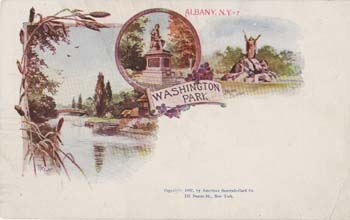
Pre 1898:
Pioneer Card Era"Pioneer" cards are post cards that were published before the May 19, 1898 Act of Congress, which allowed privately-printed cards to be mailed for the same one-cent postage as government-issued cards.
Read more about the Pioneer Card Era -
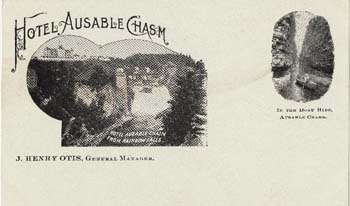
1898-1901:
Private Mailing Card EraIn 1898, Congress passed a bill that halved the cost of postage for commercially produced cards from two cents to the one cent required for government issued postals. In return, these non-government cards were required by law to be identified by the words, “Private Mailing Card, Authorized by an Act of Congress of May 19, 1898” printed on the back.
Read more about the Private Mailing Card Era -
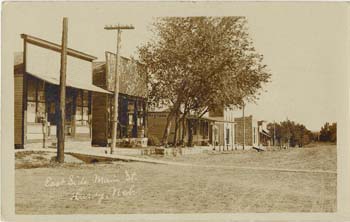
1899-1920s:
Real Photo Postcards and CyanotypesReal Photo Postcards, or RPPC’s, as they are commonly called, are true photographs, chemically produced on photographic paper from a negative, with a printed postcard back. 1899 was the first year that real photo postcards, as we know them, were produced.
Read more about Real Photo Postcards and Cyanotypes -
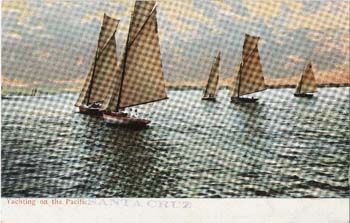
1901-1907:
Undivided Back EraIn December of 1901, Order no. 1447 was issued by the U.S. Postal Service, allowing the formal “Private Mailing Card” title to be dropped from the back of commercially printed cards and replaced with the simple, “Post Card.” At this time, only the name and address of the postcard recipient were permitted to be written on the backs of postcards.
Read more about the Undivided Back Era from 1901-1907 -

1907-1914:
Divided Back EraA new law, passed March 1, 1907, allowed for the inclusion of correspondence on the back of post cards, separated from the address information by a vertical line. The “Undivided Back Era” is so named in opposition to the subsequent “Divided Back Era,” illuminating the importance of the regulatory change that would designate more space for correspondence.
Read more about the Divided Back Era from 1907-1914 -
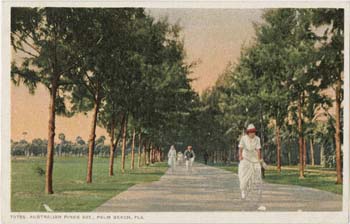
1915-1930:
White Border EraPostcard imports from Germany came to a halt during World War I, allowing American publishers to take advantage of the void in the market. Postcard imports from Germany came to a halt during World War I, allowing American publishers to take advantage of the void in the market.
Read more about the White Border Era -

1930-1944:
Linen EraWhile some Linen Era postcards continue to use a white border, these cards are distinguished from their White Border Era predecessors by the high rag content used in the postcard stock. A woven, “linen-like” finish is very apparent in these cards, which are many times also characterized by the use of bright dyes and eye-catching color schemes.
Read more about the Linen Era -
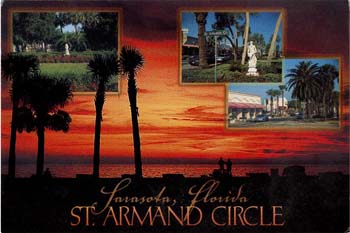
1945-present:
Photochrome or Chrome EraThe “chrome” era postcards are mostly the cards that are currently produced and sold. By utilizing a high-quality printing process that creates an image by staggering and mixing colored dots, photochromes are many times confused for real photographs, though early examples showed some blurred features.
Read more about the Chrome Era

